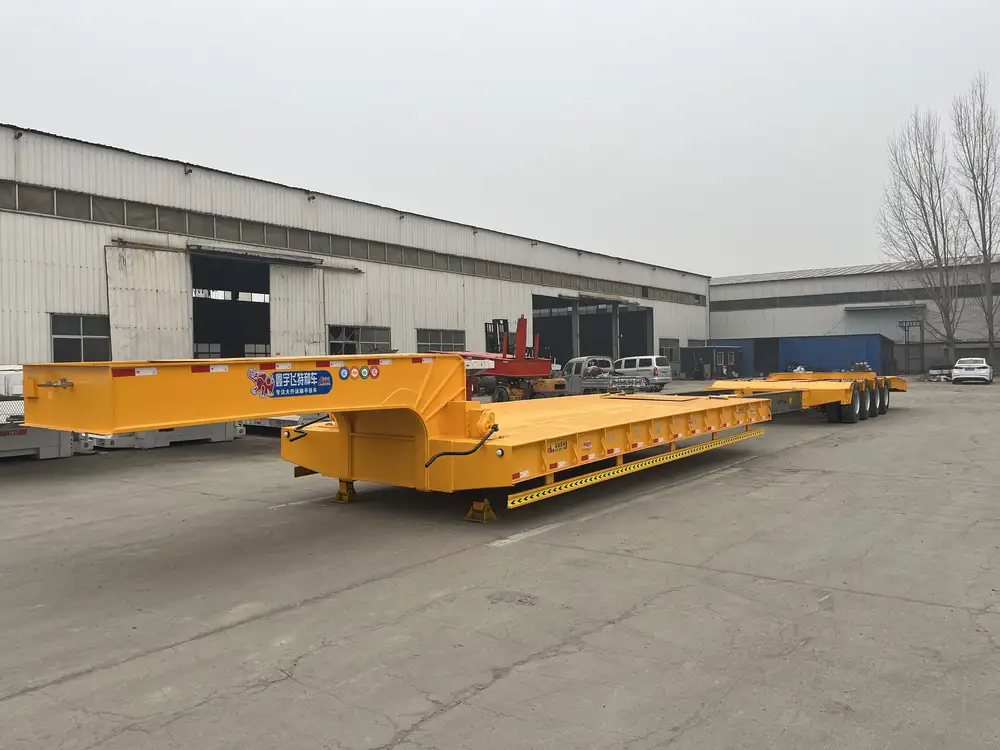When embarking on transportation logistics, the dimensions and specifications of the vehicles and trailers we use become paramount. A pivotal piece of this puzzle is understanding the height of truck trailers, which has implications for road safety, legal compliance, and operational efficiency.
What is the Standard Height of a Truck Trailer?
The typical height of a semi-trailer truck can vary significantly depending on the type of trailer being used. Standard heights generally fall within the following ranges:
| Type of Trailer | Height Range (Feet) |
|---|---|
| Standard Dry Van | 13.5 – 14.5 |
| Flatbed Trailer | 13.5 – 14.5 |
| Refrigerated Trailer | 13.5 – 14.5 |
| Tanker Trailer | 13.5 – 14.5 |
| Lowboy Trailer | 12.0 – 14.0 |
In most cases, the standard height for trailers used on U.S. highways is limited to 13.5 feet, with some states allowing heights up to 14 feet. It is essential for operators to be aware of these regulations, as they can differ by state and by the type of infrastructure being traversed.
Regulations Governing Trailer Heights
Navigating the highways requires adherence to established regulations governing vehicle dimensions. Here’s a breakdown of pertinent regulations:
Federal Regulations: In the United States, the Federal Highway Administration limits trailer heights to a maximum of 13.5 feet. This regulation is critical in maintaining safety standards on highways and underpasses.
State-Specific Regulations: Each state may impose additional restrictions. For instance, California has specific rules regarding height allowances which can be lower than federal standards when vehicles traverse certain bridge structures.
Local Ordinances: Cities and municipalities may have their own restrictions that can further limit heights, especially in urban areas with low bridges and overpasses.

Impact of Height on Truck Trailers
1. Safety Concerns
Operating a trailer that exceeds the legal height can lead to serious safety hazards. Height-related accidents, such as collisions with low bridges and overpasses, can cause significant damage to both the vehicle and surrounding infrastructure. Utilizing height gauges or checking with authorities can help prevent the operation of oversized vehicles.
2. Aerodynamics and Fuel Efficiency
The height of a truck trailer can also influence its aerodynamic performance. Taller trailers may experience increased wind resistance, which can negatively impact fuel efficiency. For long-haul drivers, even minor improvements in fuel consumption can result in substantial cost savings over time.

3. Loading and Unloading Considerations
The height of the trailer is crucial when considering loading docks and terminal operations. High trailers may not be compatible with all loading equipment and can necessitate specialized handling or adjustments within freight terminals.
Calculating Trajectory and Clearance Needs
Abraham’s Law of Clearances
In logistics, understanding the necessary clearance for a truck trailer is critical. To ensure safety and compliance, consider the following formula:
Total Clearance Required = Trailer Height + Margin of SafetyWhere:
- Trailer Height: Measured in feet.
- Margin of Safety: Typically an additional 1-2 feet to accommodate uneven road surfaces and potential load shifts.

Example Calculation
For a standard dry van trailer measuring 13.5 feet in height, you would want to consider a margin of safety of at least 1.5 feet. Thus, the total clearance required would be:
Total Clearance Required = 13.5 + 1.5 = 15 feet This calculation helps determine compatible routes and ensures that drivers avoid low-clearance areas.
Customizing Your Trailer for Height and Functionality
1. Adjustments in Height
While standards exist, custom modifications can help adapt trailers for specific needs. Some examples include:
- Air Ride Suspensions: Allow for height adjustments during loading.
- Extendable Trailers: Useful for transporting oversized loads while keeping within regulations.

2. Types of Custom Trailers
| Custom Trailer Type | Features | Use Case |
|---|---|---|
| Extendable Flatbed | Adjustable length and height | Ideal for hauling oversized machinery. |
| Step Deck Trailer | Dual deck levels | Provides lower loading height for tall equipment. |
| Lowboy Trailer | Low profile design | Designed for heavy, tall loads such as construction equipment. |
3. Future Innovation Trends
As technology advances, innovative approaches to maximizing efficiency in trailer design are emerging. Solutions such as lightweight materials and dynamic height-adjusting systems are likely to gain traction, which will not only improve legality but also enhance fuel efficiency.
Common Questions Regarding Truck Trailer Heights

How Do I Measure the Height of a Truck Trailer?
To accurately measure the height of a truck trailer:
- Park the trailer on a flat, even surface.
- Use a tape measure to measure from the ground to the highest point on the trailer, typically the roof.
- Ensure to account for any additional features, such as added height from cargo.
What Happens if I Exceed the Height Limit?
Exceeding the height limits can lead to:
- Fines and penalties from law enforcement.
- Safety hazards such as infrastructure damage, which can incur costly repairs.
- Liability issues in the event of accidents caused by non-compliance.
Can I Use a Smartphone App for Height Checks?
Several smartphone applications are available that assist in calculating the height of your truck trailer or the clearance of overhead spaces. These applications can integrate GPS data and alert users of nearby height restrictions.

Conclusion
Understanding the nuances of truck trailer heights is vital for manufacturers, operators, and logistics managers. By inspecting regulations, calculating necessary clearances, and accommodating safe practices, you can navigate the complexities of transport with confidence. Whether it’s assessing current trailer heights or planning for custom solutions, a comprehensive approach ensures efficiency and compliance in your operations.
For those involved in the trucking industry, staying informed about these aspects not only enhances safety but also improves overall productivity and cost-effectiveness. As the industry continues to evolve, maintaining a keen awareness of height considerations will play a central role in its future success.



